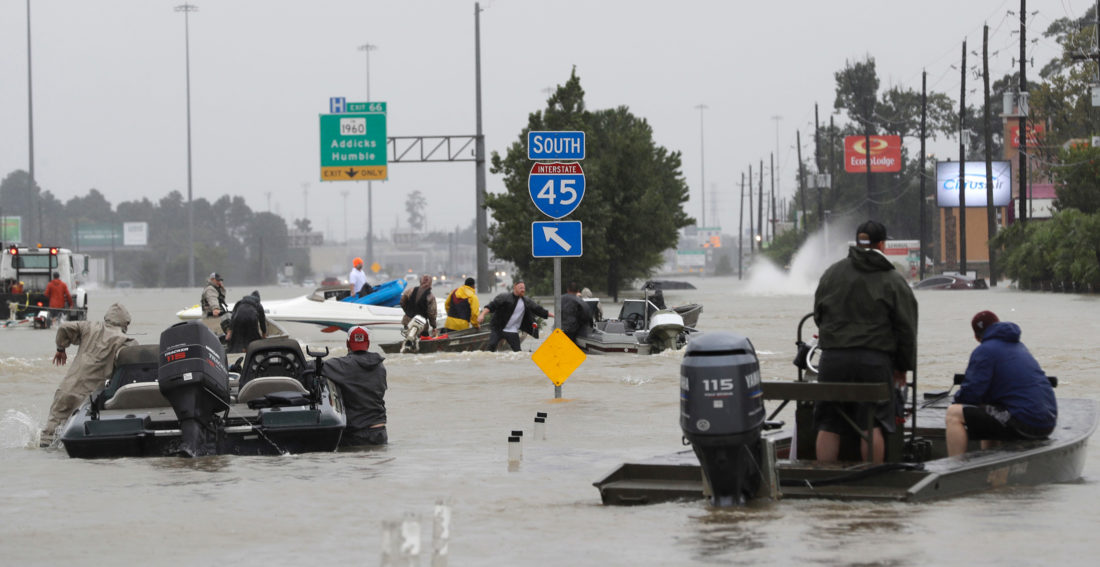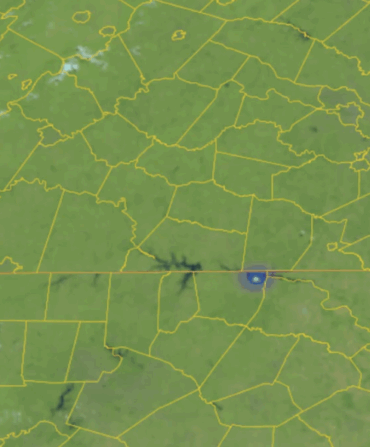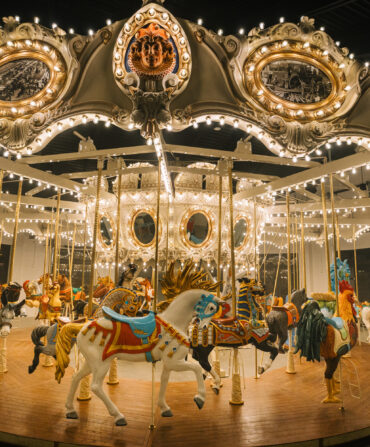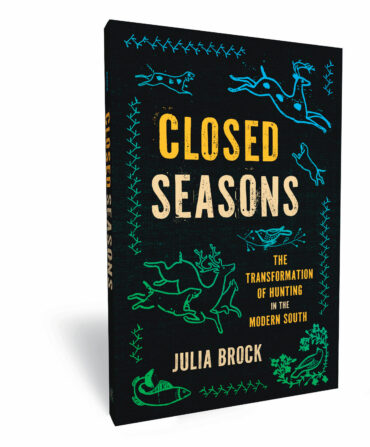The pickups and SUVs with Louisiana license plates started streaming into the flooded areas of Texas almost immediately after Hurricane Harvey hit. They towed with them all sorts of watercraft—airboats, duck boats, fishing skiffs, and even kayaks—and dove right in, rescuing people from stranded cars and houses amid the unprecedented and catastrophic flooding. They were all volunteers, unofficial in capacity and organized mainly through various Facebook pages. Collectively, they have become known as the “Cajun Navy.”
Formed in the aftermath of 2005’s Hurricane Katrina, and re-formed over and over again through more hurricanes and, most recently before Harvey, during 2016’s devastating Louisiana floods, the Cajun Navy are literal life savers, and a reminder that even our darkest tragedies tend to reveal the best in humanity.

Photo: AP Photo/David J. Phillip
Volunteers in rescue boats make their way through Spring, Texas.
Billy Nungesser, the Lieutenant Governor of Louisiana, has witnessed the Cajun Navy’s heroism firsthand. During Katrina, Nungesser’s home parish of Plaquemines, 14 miles from the eye of the storm, experienced dangerous flooding. With most of the official response focused on New Orleans, the rescue attempt was taken up by dozens of volunteers with boats. They came to the parish and “plucked people from their roofs,” Nungesser says. “They risked their lives to help their neighbors.”
Seven years later, Hurricane Isaac flooded the east bank of Plaquemines. “There were many elderly people just stuck on their roofs in the middle of the storm,” Nungesser says. “The Coast Guard said it was too dangerous to go out, but a man and his son went from house to house in a boat. One person drowned, but if it had not been for them, they all would have drowned.”
And then in 2016, 57 of Louisiana’s 64 parishes flooded. “There was no way for anybody to respond to something like that in an organized way,” Nungesser says. Instead, the Cajun Navy came to the rescue again.
Nungesser points out that the airboat, the sort of unofficial boat of Louisiana, is a perfect vehicle for these types of rescues—light and able to navigate shallow water. The sportfishing mechanisms on some of them—particularly the bright searching lights used by bow fishermen—also come in handy for rescues. “They can light up a neighborhood at night like it’s the daytime,” he says.
And now they’ve headed for Texas. Nungesser estimates that hundreds of members of the Cajun Navy have left Louisiana so far. “They weren’t even asked,” he says. “They just hooked up their boats and headed out to go help their neighbors. These are unbelievable acts of kindness. The goodwill of American citizens never ceases to amaze me.”
Click here for information on ways to help the victims of Hurricane Harvey.







